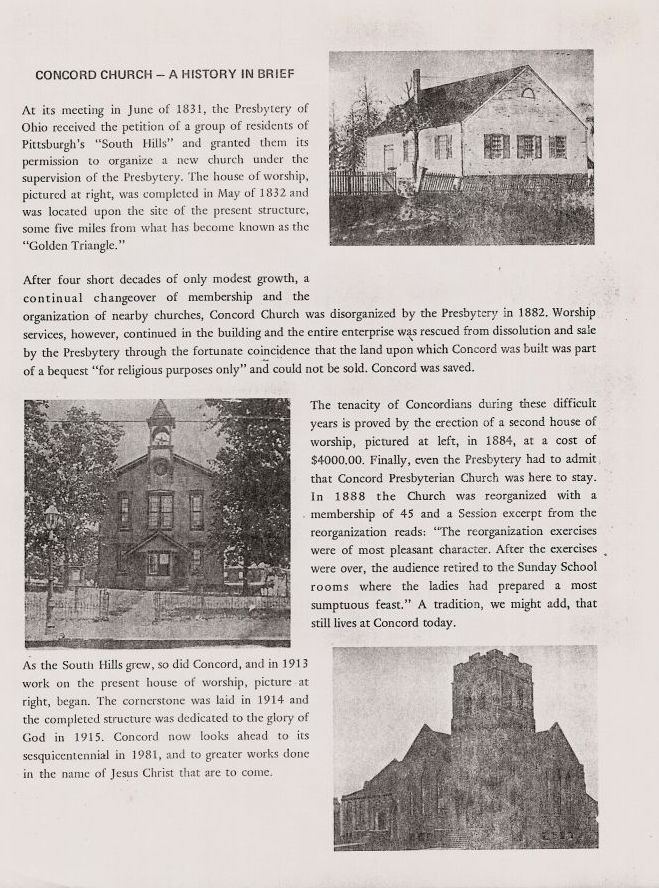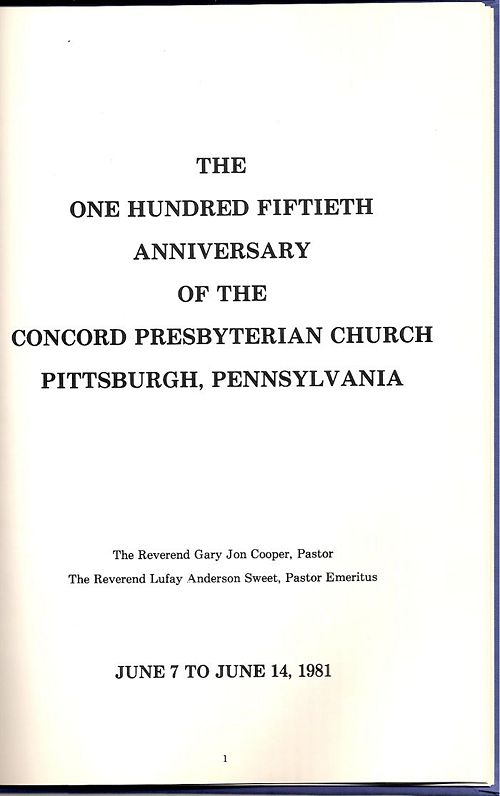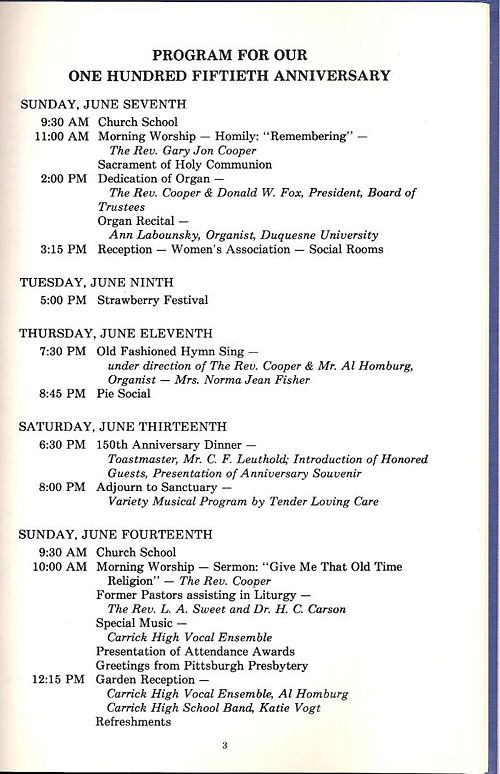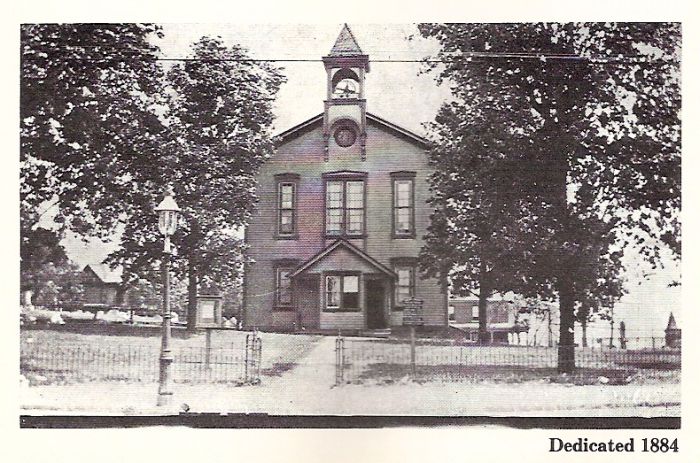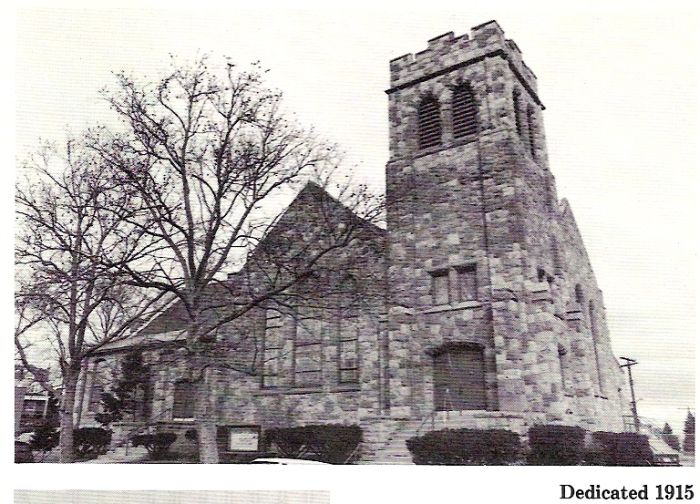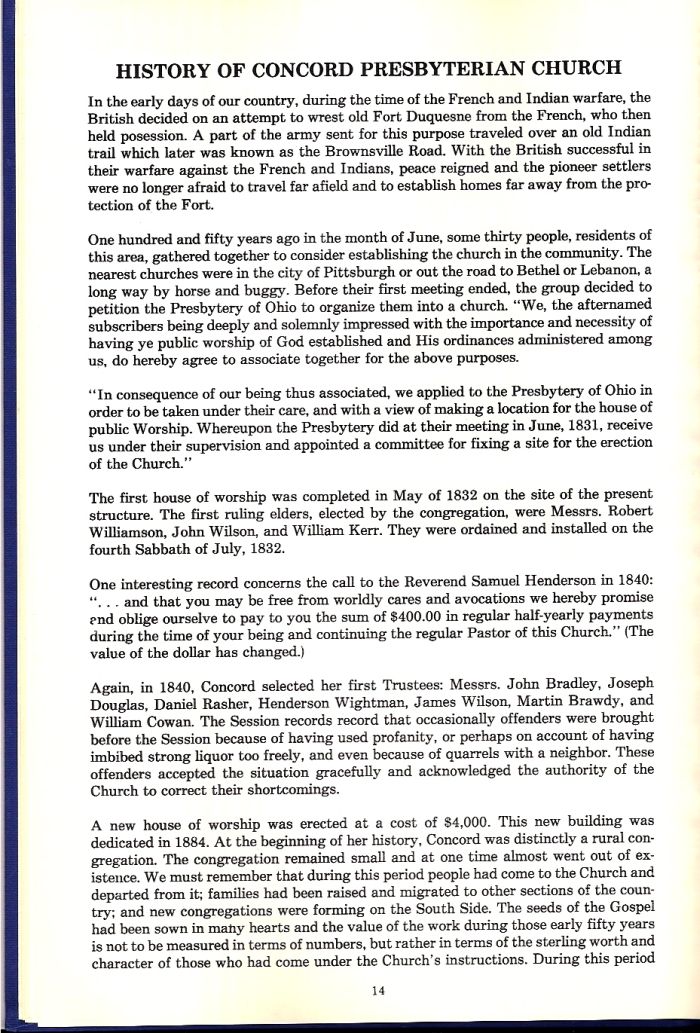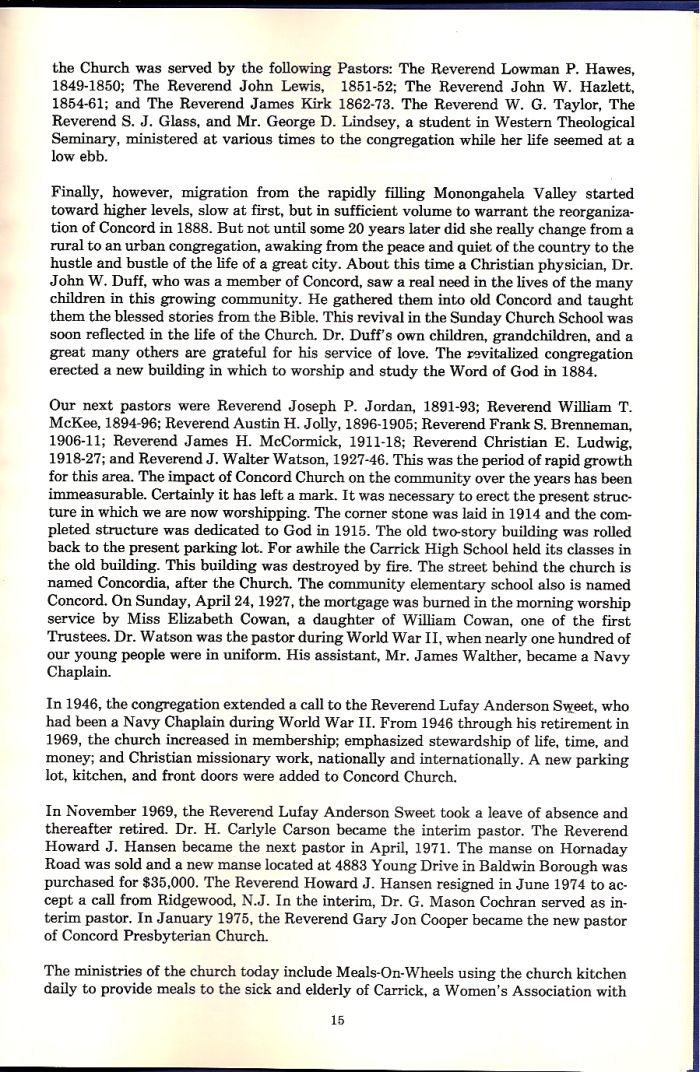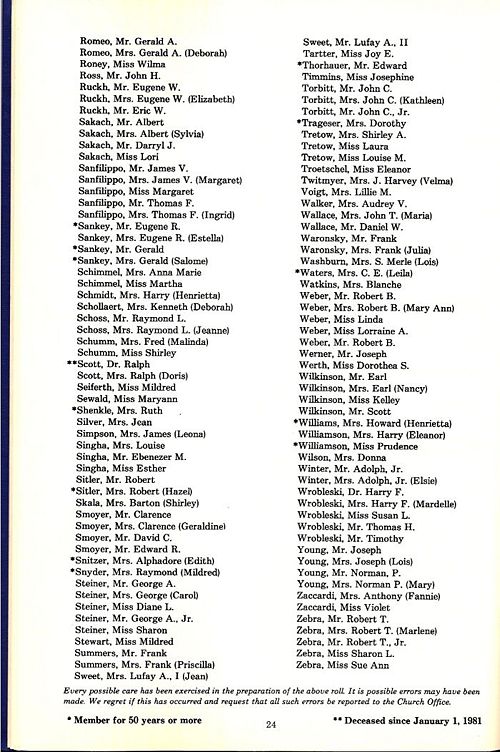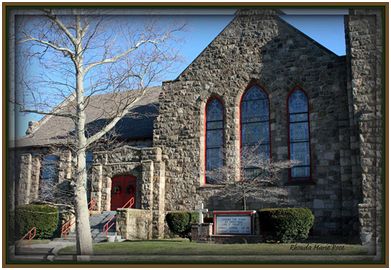Concord Presbyterian Church
Concord Presbyterian Church in Carrick was originally formally started in 1831, but the Concord Cemetery dates back even further.
This page gives a summary of the history of the church.
In 1918 the new Concord Presbyterian Church was already built. The church built in 1884 was moved into what is now the parking lot behind the present church to make way for the construction of the present church. This photograph of the 5th Contingent taken in front of the church shows the juxtaposition of the two.
 Photo donated by The Walde Family of Mt. Oliver.
Photo donated by The Walde Family of Mt. Oliver.
In 1981 the Concord Presbyterian Church celebrated their 150th anniversary with a booklet documenting their history.
This is a photo from page 5 of the 1831 Concord Church.
This is a larger photo from page 5 of the 1884 Concord Church.
This is a larger photo from page 6 of the 1915 Concord Church.
Known locally as "The Black Church" it was so called because of the black stained walls from the smokey air in the City of Pittsburgh. It was cleaned in the 1980s to its orginal sandstone color.
(Yet to be scanned) 500px 500px
The following two pages, 14 and 15 describe the history of Concord Church. The history notes that the second church was rolled back into the current parking lot while the new 1915 stone church was being built. Afterwards Carrick High School used the 1884 church for lessons. That church burned down.
Not mentioned in the history is that Concord Elementary School's first one room school house was built on the back of the first church and this is why Concord Elementary School carries that name today.
From the 2011 Advent Historic Church Walk Booklet
Concord Presbyterian Church
1907 Brownsville Road
Pittsburgh PA 15210
HISTORY OF CONCORD PRESBYTERIAN CHURCH
In the early days of our country, during the time of the French and Indian warfare, the British decided on an attempt to wrest old Fort Duquesne from the French, who then held possession. A part of the army sent for this purpose traveled over an old Indian trail which later was known as the Brownsville Road.
With the British successful in their warfare again the French and Indians, peace reigned and the pioneer settlers were no longer afraid to travel far afield and to establish homes far away from the protection of the Fort.
One hundred and fifty years ago in the month of June some thirty people, residents of this area, gathered together to consider establishing the church in the community. The nearest churches were in the city of Pittsburgh or out the road to Bethel or Lebanon, a long way by horse and buggy.
Before their first meeting ended, the group decided to petition the Presbytery of Ohio to organize them into a church. "We, the after named subscribers being deeply and solemnly impressed with the importance and necessity of having ye public worship of God established and His ordinances administered among us, do hereby agree to associate together for the above purposes. Inconsequence of our being thus associated, we applied to the Presbytery of Ohio in order to be taken under their care, and with a view of making a location for the house of public Worship, whereupon the Presbytery did at their meeting in June, 1831, receive us under their supervision and appointed a committee for fixing a site for the erection of the church."
The first house of worship was completed in May of 1832 on the site of the present structure. The first ruling elders, elected by the congregation were Messrs. Robert Williamson, John Wilson, and William Kerr. They were ordained and installed on the fourth Sabbath of July, 1832.
One interesting record concerns the call to the Reverend Samuel Henderson in 1840: "...and that you may be free from worldly cares and avocations were hereby promise and oblige ourselves to pay to you the sum of $400.00 hi regular half-yearly payments during the time of your being and continuing the regular Pastor of this Church."
The Session records record that occasionally offenders were brought before the session because of having used profanity, or perhaps on account of having imbibed strong liquor too freely, and even because of quarrels with a neighbor. These offenders accepted the situation gracefully and acknowledge the authority of the Church to correct their shortcomings.
A new house of worship was erected at a cost of $4,000. This new building was dedicated in 1884. At the beginning of her history, Concord was distinctly a rural congregation. The congregation remained small and at one time almost went out of existence. We must remember that during this period people had come to the Church and departed from it; families had been raised and migrated to other sections of the country; and new congregations were forming on the South side.
Finally, however, migration from the rapidly filling Monongahela Valley started toward higher levels, slow at first, but in sufficient volume to warrant the reorganization of Concord in 1888. But not until some 20 years later did she really change from a rural to an urban congregation, awaking from the peace and quiet of the country to the hustle and bustle of the life of a great city.
About this time a Christian physician, Dr. John W. Duff, who was a member of concord, saw a real need in the lives of the many children in this growing community. He gathered them into old Concord and taught them the blessed stories from the Bible. This revival in the Sunday Church School was soon reflected in the life of the Church. The impact of Concord Church on the community over the years has been immeasurable. Certainly it has left a mark.
It was necessary to erect the present structure in which we are now worshipping. The corner stone was laid in 1914 and the completed structure was dedicated to God in 1915. The old two-story building was rolled back to the present parking lot. For awhile the Carrick High School held its classes in the old building. This building was destroyed by fire. The street behind the church is named Concordia after the Church. The community elementary school also is named Concord.
The church is a meeting place for the American Association of Retired Persons, Order of the Easter Star, and Alcoholics anonymous. Recently the benevolence budget of Concord has been supporting the Reverend and Mrs. Robert Collins in Thailand, and the Reverend and Mrs. Alfred Scholrholtz in Nepal.
In National missions, money is sent to the Navajo Indians, Presbyterian Medical Mission in Woodville, Texas, and the board of Christian Education. In Pennsylvania, Concord supports the Pittsburgh Theological Seminary, Home for the aged, Presbyterian University Hospital, thirty Pittsburgh Presbytery missions, seven U.P. Colleges, Camp Crestfield., Pittsburgh Region International Student Ministries, and Carrick Youth Outreach.
The cassette ministry was begun in 1971 providing cassette and tapes of current sermons to the shut-ins. A nursery was donated by Mr. and Mrs. George Korpa. It is located in the rear of the lecture room. This was completed in November, 1973. Auditory equipment, including pulpit and portable microphones and speakers in the sanctuary, nursery, and social hall were installed. A memorial book, guest register, and stand were donated, as well as an outdoor bulletin board and theater type seats for the balcony.
In 1965, the sanctuary was redecorated and restrooms were remodeled. Mr. Robert A Schneider contributed $3,000 and challenged the congregation to pay off the balance in one year. Herman Barchfeld served 58 years as a faithful and devoted officer of the church. He retired from the Trustee Board in December 1970 and was honored as elder, trustee, and deacon emeritus.
An improvement program entitled, Forward to '81 included consolidating the church offices in the basement complex, replacement of the pipe organ, and sandblasting and sealing the exterior stone. This was financed by pledges from the congregation over a three year period. All contributions to the organ made the first year were matched by an anonymous donor. Keys were also bought by individuals and organization to finance the organ.
The estate of Elsie L. Donnally provided seed money to repair the stained glass windows and have them covered permanently. Members of the congregation subscribed to individual windows.
Concord Church is celebrating one hundred fifty years in Christ's service and looking forward on one hundred fifty more years.
